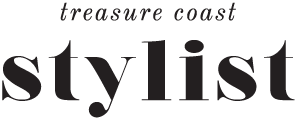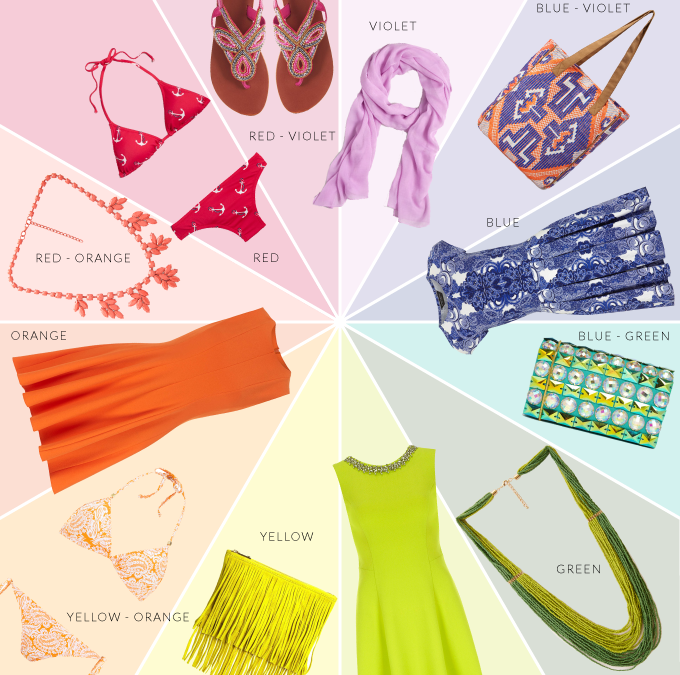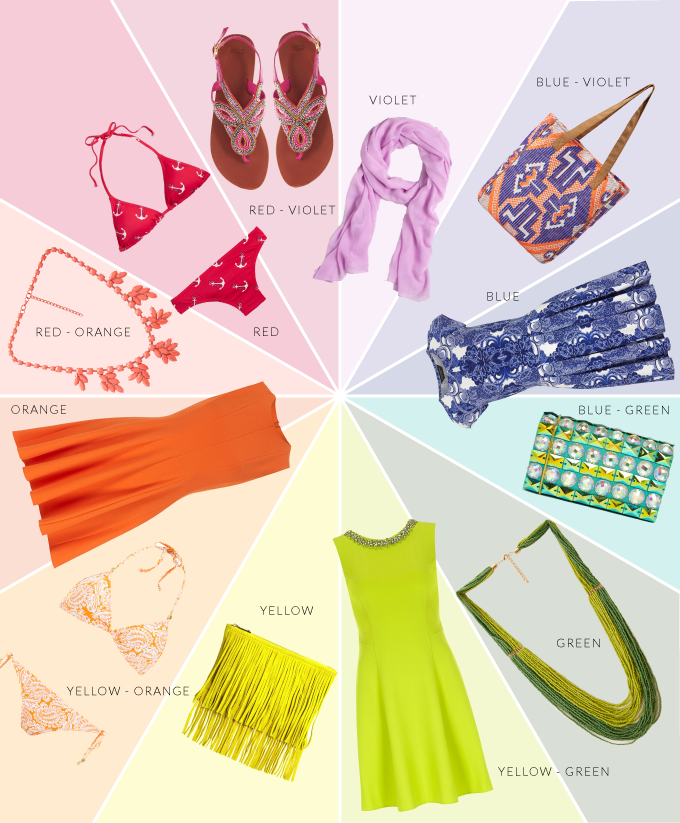Let’s talk color. You’ll rarely find me in a completely neutral outfit in the summertime (or any other time of the year). Even when I’m wearing a black top and jeans I’ll add my Charlene K turquoise pendant from RockBox because I need that pop of color to complete my outfits. When I was in design school (the first time) I took an entire class solely on color. I thought I would share some of what I learned in class and gleaned over the years at my various design jobs to make your life with color a little less complicated.
COMPLEMENTARY COLORS
Complementary colors are any two colors which are directly opposite each other on the color wheel. Examples of this are yellow-green and red-violet, orange and blue, and red-orange and blue-green. These combinations are high contrast and really make a statement when paired together. Wear them in their most saturated forms or try them in a pastel version.
SPLIT COMPLEMENTARY COLORS
Split complementary colors are a little less of a contrast than complementary. They are made up of three hues. First you choose your main starting color and select the two colors on either side of its complementary color. Examples of this are yellow-green, violet and red; orange, blue-violet and blue-green; and red-orange, green and blue. As you can tell, these colors are more harmonious than complementary colors making them easier to pair together.
TRIAD COLORS
A triadic color scheme uses colors that are evenly spaced around the color wheel. Examples of this are yellow-green, violet-blue and red-orange; orange, green and violet; and yellow-orange, blue-green and red-violet. Some of the combinations could be a bit difficult like blue, red, and yellow, but most pair pretty well. My suggestion on wearing the triad would be to select one color as the main focal point and add some accessories in the other colors.
ANALOGOUS COLORS
 Analogous color schemes use colors that are next to each other on the color wheel. They make sense visually and are a great way to take baby steps into mixing and matching colors. Examples of this are yellow, yellow-green and green; orange, red-orange, and red; and blue-green, blue, and blue-violet.
Analogous color schemes use colors that are next to each other on the color wheel. They make sense visually and are a great way to take baby steps into mixing and matching colors. Examples of this are yellow, yellow-green and green; orange, red-orange, and red; and blue-green, blue, and blue-violet.
Hopefully this gave you some inspiration on pairing colors. I started a Pinterest board with some of my favorite colorful looks to inspire you further and distract you at work – kidding, kind of. See it here.




